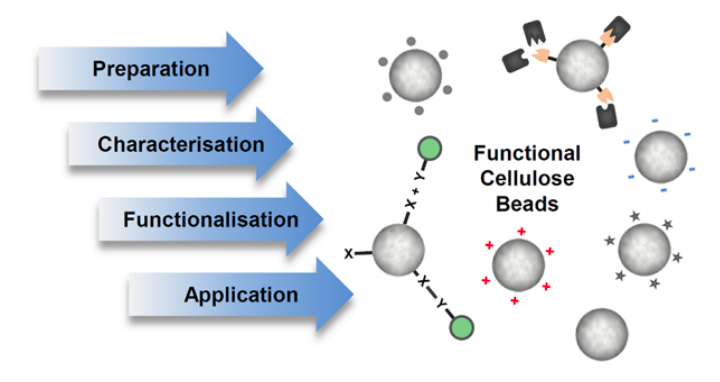The preparation of cellulose-based materials is an area of increasing interest for scientists working in chemistry, chemical engineering, biochemistry, and many other related areas involving the chemical design of biobased materials. Polysaccharides provide excellent mechanical and chemical properties combined with the features of a bioresource, for example, abundance, biocompatibility, and sustainability. Furthermore, the ease of chemical modification enables tuning of cellulose’s properties from hydrophilic to hydrophobic and from noncharged to anionic or cationic. Cellulose beads are spherical particles with diameters in the micro-to millimeter scale, which are used in many advanced applications ranging from chromatography over solid supported synthesis and protein immobilization to retarded drug release.
Martin Gericke, Jani Trygg, and Pedro Fardim, Chem. Rev., 2013, 113 (7), pp 4812–4836 DOI: 10.1021/cr300242j
